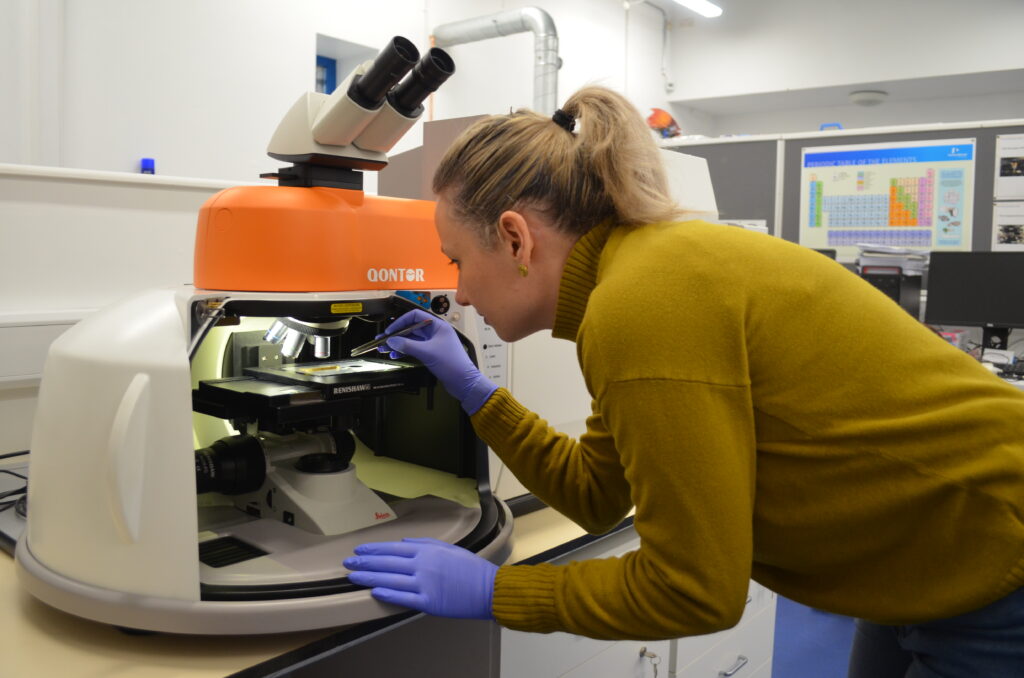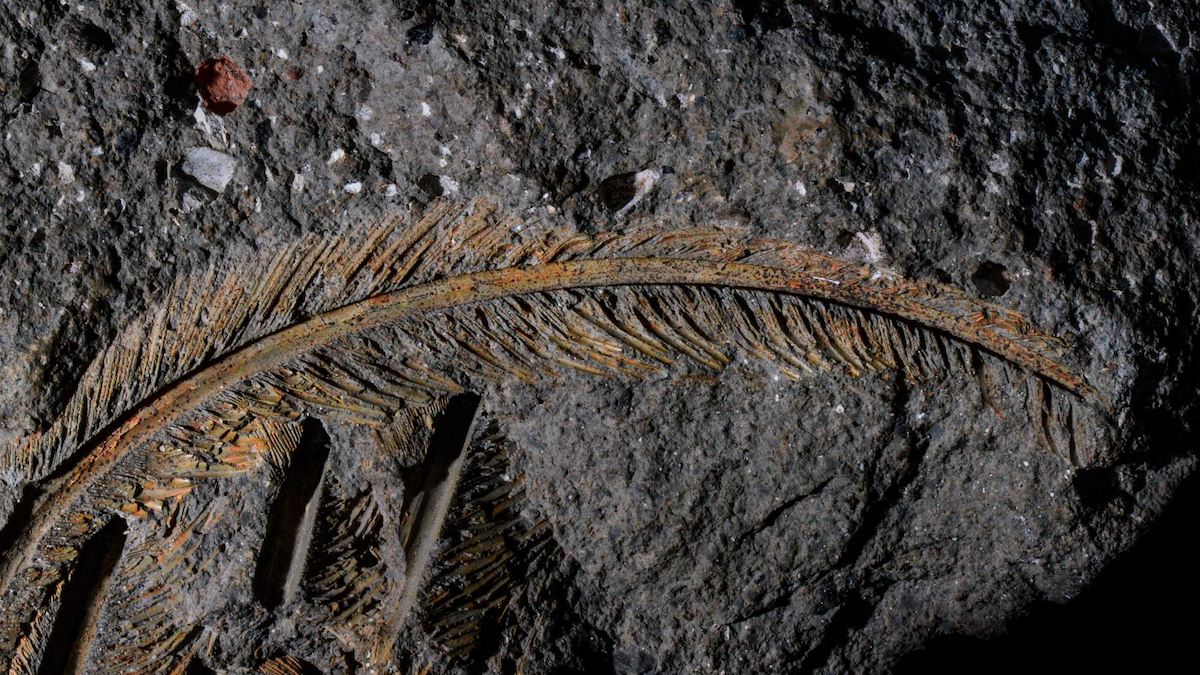Valentina Rossi first saw the 30,000-year-old griffon vulture as a master’s student in Rome in 2014. The fossil, which had been found by a local landowner near Rome in 1889, was remarkably well-preserved. She couldn’t look away as her future collaborator, Dawid Iurino, presented about the fossilized imprint of the bird’s head.
“I was mind-blown,” Rossi said.
The presentation by Iurino, now an associate professor at Universita degli Studi di Milano Statale, ended with a discussion of the bird’s feathers. Rossi remembers him saying that determining what exactly the feather fossils were made of was a topic for future research because analyzing such well-preserved structures was outside of the expertise of the team of paleontologists at the time.
Now, a new study by Rossi, Iurino, and others, published in Geology, has finally revealed the answer: The feather fossils are made of zeolites—minerals made of aluminum and silicon compounds. This study is the first time scientists have reported soft-tissue mineralization by zeolites.
“We finally did it.”
“We finally did it,” said Rossi, lead author of the paper and a paleontologist at University College Cork in Ireland.
It’s extremely rare to find feathers preserved in three dimensions and even rarer to find mineralized feathers, Rossi said. The knowledge that the feathers were fossilized by zeolites, minerals that form naturally by reactions between volcanic rock and water, could guide paleontologists to target volcanic settings when searching for fossils.
“The more people look, the more people are going to find the preservation of materials that we previously thought was impossible,” said Mary Schweitzer, a paleontologist and emeritus professor at North Carolina State University who was not involved in the new study.
Matching Minerals
Rossi and the team of scientists used a powerful electron microscope to study the shape and texture of the preserved structures, confirming that the tissue was mineralized. Then, they analyzed the chemical structure of the fossil using multiple spectroscopy methods. “We recognized certain chemical bonds that are similar to those found in zeolites,” Rossi said.

Certain soft tissues lend themselves to fossilization. Muscle tissues, for example, are commonly mineralized by the calcium phosphate mineral apatite. That’s because muscle tissue already contains calcium and phosphorus, which jump-start the mineralization process.
Laboratory studies have shown that zeolites will form on biological materials in solutions of silicon and aluminum. But feathers do not contain these elements, making the zeolite fossil puzzling, Rossi said.
Schweitzer said that parts of certain molecules that make up decaying feather tissue may have an affinity for aluminum or silica but that more research would be needed to determine the exact chemistry behind the mineralization. Another explanation for the mineralization, Rossi suggested, may involve the pH of the soft tissue, especially as the tissue decays.
A Vulture’s Final Moments
The findings helped Rossi and her colleagues create a taphonomic model—a likely story line of how the bird went from a living animal to a hunk of rock. Previous studies of the whole fossil had not indicated that the bird was injured; Rossi suspects toxic gases from a nearby volcanic eruption may have killed it.
Dead but intact, the bird lay in the path of a lava flow. Rossi thinks the vulture was probably quite far from the actual eruption and may have been covered by a cooler, slow-moving volcanic flow, as its tissues weren’t destroyed by heat or turbulence.
The findings “open up another window for fossilization.”
The volcanic flow hardened and cooled with the griffon vulture beneath it. Eventually, rains soaked the rock, creating a fluid rich in minerals. The chemical composition of the bird’s feathers spurred a reaction with the silicon- and aluminum-rich fluids, and zeolites began to form and replace the tissue. The feathers turned to stone faster than they decayed.
Something similar may have happened to many more specimens over Earth’s history, which could mean that paleontologists are overlooking entire categories of rock in which highly preserved soft-tissue fossils may be found, the authors write. Volcanic settings are typically disregarded as likely spots to find fossils because volcanic flows are turbulent and hot and usually destroy soft biological material that might otherwise be fossilized. But the new paper’s results mean there are likely some exceptions.
The findings “open up another window for fossilization,” Schweitzer said.
—Grace van Deelen (@gvd.bsky.social), Staff Writer
This news article is included in our ENGAGE resource for educators seeking science news for their classroom lessons. Browse all ENGAGE articles, and share with your fellow educators how you integrated the article into an activity in the comments section below.


